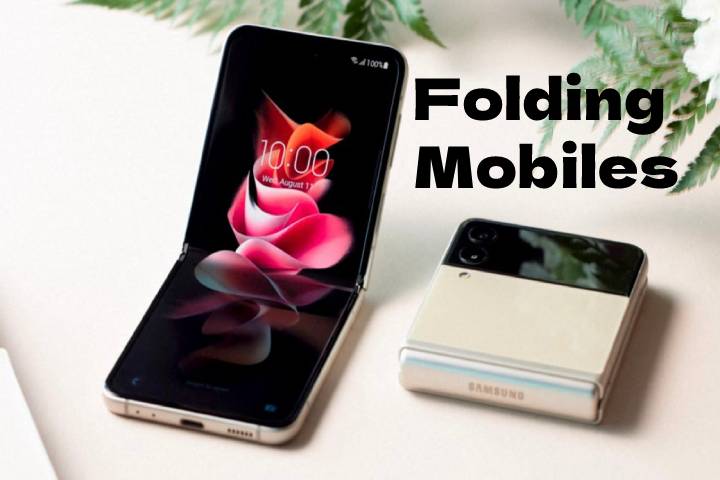Folding Mobiles: They Fit The Pocket

We have witnessed complete homogeneity in the format of smartphones. With more or less large screens, more or fewer frames, and thinner or lighter phones, but without changing the design: in more than a decade, it has been essentially the same. The battle was to offer more and better cameras and processors, more efficient batteries, or more storage capacity. Still, the form factor, the options, and the functions provided by design have not evolved until now.
New mobiles: flexibility and curves, above all
The evolution of any technology takes time. If phones with a folding screen are offered on the market today, it is because flexible ones existed before. They couldn’t fold back on themselves, but they did have some level of twist. The pioneer brand was LG in 2014: first, with the LG G Flex and, a year later, with its second version. These terminals had a characteristic curvature, which allowed a particular ability to bend and resist this change in shape. Thus, they had a more ergonomic format, but, above all, with the first screens that could be bent and stretched, even minimally.
These flexible mobiles were not successful, but the screens capable of bending remained in the market, even if we could not modify their shape. It was the rise of overflowing nets, capable of curving at the ends and whose first exponent was the Samsung Galaxy Note Edge. This format is here to stay: we have more than a dozen models yearly.
The era of folding screens
In recent months, after years of prototypes and promises, we have seen, touched, and bought the first folding phones. After more than a decade of immobility, they are also the foremost exponents of a real revolution in mobile phone design. But what has changed?
The key to the appearance of the first smartphones capable of folding lies in developing OLED ( Organic Light-Emitting Diode ) technology. The screen of any electronic device is a sum of layers. An OLED panel has six at the top and six at the bottom. These layers are thinner than other technologies, such as LED or LCD, which makes it possible to create lighter and more flexible screens. Plus, they provide more brightness and use less power because they don’t need a backlight to reproduce colors. This makes them boast of other qualities, such as the ability to produce pure blacks or have systems such as always On, which allows certain elements to be displayed on the screen at all times .
The development of this type of technology began in 2007 with the prototypes by Sony or Nokia, which did not go beyond the concept phase. However, we have had to wait another seven years for foldable terminals to become a reality, thanks also to the evolution of the technology of other components:
The adhesive holds all the layers of a screen together.
The adaptive touch sensor layer.
A network of circuits that do not break when bent.
Pros and cons of the new technology
Despite the enormous possibilities offered by this format, flexible screens are not perfect. Although they have many advantages (such as the possibility of enjoying a larger screen without taking up more space), they also have a downside. First, they cannot use complex and resistant materials such as glass, making them much more prone to scratches and deterioration. Also, like any other plastic that bends hundreds of times, the hinge point is a detail that can cause problems over time. Finally, this type of screen has a technology that is more vulnerable to humidity, and OLED diodes have a shorter useful life than LEDs or LCD solutions.
Even with its drawbacks, the superficial appearance of the first folding mobiles shows the real possibilities of this new technology since none of the models presented so far have the same format.
The Samsung Galaxy Fold offers a more reminiscent design of a book. The folded screen is protected inside, safe from scratches and bumps, and has a secondary one on the outside.
For its part, the Huawei Mate X is the opposite: it is a proposal in which the screen folds in half and works both when it is folded and when we extend it.
The Motorola RAZR recovers not only the name of the mythical series of shell terminals (that is, with a cover) but also its format. It is perhaps the most logical and, probably, one of the designs that will become more popular, not only because it has already been successful in the past but also because it unites the possibility of making terminals of contained dimensions with the obsession to protect the screen when closing it. It will allow us to carry the same screens we use now but in half the space.
How long will the exclusivity last?
Although three models are presented, only the Galaxy Fold began to be marketed in Spain at the end of 2019, after a launch postponed for almost six months due to problems detected on its screen. Next up was the Motorola RAZR, which debuted in stores in January 2020.
And the Huawei Mate X? Well, it’s still unknown. Unlike Samsung, Huawei has not had technical problems with the equipment but rather political ones. It has been caught up in US President Donald Trump’s trade war and, like the Mate 30 Pro, will hit the market without Google services. This has caused its launch in the West to be delayed until further notice, despite being available in China since November 15. Of course, we know this smartphone’s price in Europe, and it will be the most expensive of the three (almost 2,300 euros).



